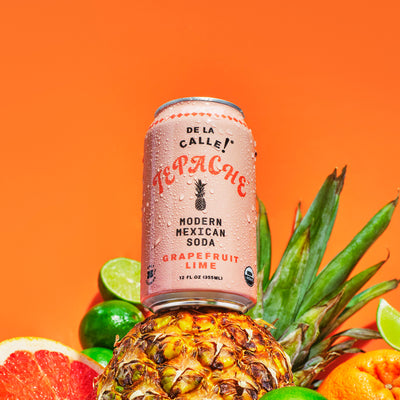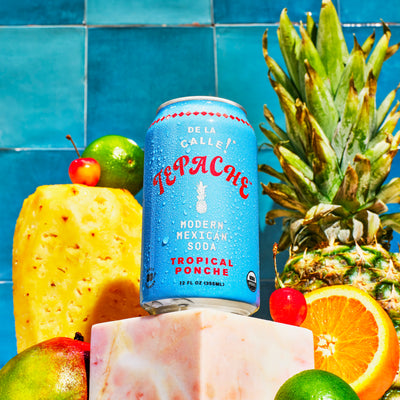Some Fun Facts About Mexican Culture

Mexican culture is fascinating and rich, a mixture of native, Spanish, and several other cultures brought to Mexico by immigrants from countries around the world. This article will provide you with a few of the hundreds of fun, interesting facts about Mexican culture.
Fun Facts About Mexican Culture
There Are 59 Varieties of Corn
Mexico is home to one of the world’s staple crops, corn which in Mexico is known as maiz. Although most people only think of the classic yellow cob when they hear the word “corn,” in Mexico, over 59 varieties of corn are produced.
Not only that, farmers in Mexico have continued the tradition of growing corn, collecting their own seeds, and preserving them for the next generation, despite the efforts of international trade organizations and genetically modified imports to change their growing process.
The Are 68 Indigenous Languages
While there are several types of corn grown in Mexico, there are even more languages recognized by the government. Mexican law officially recognizes 68 indigenous languages. Although Spanish is the language used for most commerce and government business, there are still large populations of people in Mexico who speak indigenous languages. That being said, several indigenous languages are in danger of extinction.
Arabic Influence on Mexican Spanish
After Mexico was colonized by the Spanish, Spain went through a massic cultural evolution that attempted to rid the language of all Arabic influence as Muslim people were forced out of Spain. Given that the Spanish looked down on the Arabic language as inferior, they did not want it to have any influence on their language.
While all this was happening in Europe, the Spanish spoken in Mexico remained unchanged and retained its Arabic influence. For this reason, some words still used in Mexican Spanish have Arabic origins, such as alberca (pool) and almohada (pillow).
Mexico City Is Home of the Chinampas
The word chinampa refers to an agricultural technique wherein small areas of fertile land were used to grow crops on the lake beds of the Valley of Mexico. This technique was started by an indigenous group and further developed by the Aztecs. The chinampas south of Mexico City appear to be a system of canals and “floating gardens” that are comparable to the rice paddies in China in terms of their agricultural importance and uniqueness.
Mexican Independence Day Is NOT Cinco De Mayo
Although they are often confused in the United States, Mexican Independence Day is not the same as Cinco de Mayo. Mexican Independence Day is celebrated on September 16th and is a national holiday celebrated throughout Mexico. There are often parades, fireworks, music, and dancing to celebrate Mexican Independence Day, and a distinct array of foods are served, including Pozole and Chiles en Nogada.
Cinco de Mayo, on the other hand, is a commemoration of the Mexican army’s defeat of French forces at the Battle of Puebla during the Franco-Mexican War in 1862. Cinco de Mayo is not widely celebrated in Mexico but is an important holiday in the United States because it offers Mexican-Americans a chance to celebrate their culture and heritage.
Mexico Is Famous For Its Murals
In the 1920s and 30s in Mexico, there was a revolution in art that led to the Muralist movement. During this time, the country was struggling to redefine itself and separate from its European past after the Mexican Revolution.
In response to this struggle, a group of Mexican artists began creating murals that celebrated Mexican history and culture as well as the lives of common people. Some of these artists included Rivera, Orozco, and Siqueiros. The murals were pained on public buildings, bringing art into the public sphere where it could be enjoyed by people of all classes.
Christmas Season Ends in January
Unlike the United States, where Christmas celebrations end on Christmas Day, the Christmas season in Mexico lasts for a month and ends on January 6th. On January 6th, Three Kings Day is celebrated. Three Kings Day is a celebration of the Three Wise Men who came to visit Jesus. On this day, these men are said to bring gifts to children just as they did to Jesus.
Mexico City Is One of the Largest Cities in the World
Mexico City is the fifth-largest city in the world, after Tokyo, Delhi, Shanghai, and São Paulo. This historic city was originally known as Tenochtitlán, founded in 1325 AD by the Aztecs. When the Aztecs built the city, it was on an island in Lake Texcoco. For this reason, Mexico City sinks at a rate of almost 50 centimeters (20 inches) per year.
Aztec Influence on the Mexican Flag
The Aztec people had an ancient prophecy that said a god would tell them where to build a great city by showing them a sign. The sign would be an eagle eating a snake while perched on a cactus. For this reason, the eagle became the enduring symbol of Tenochtitlán.
Once Mexico gained its independence, a new flag was created. The center of the flag displays an eagle devouring a snake with one foot resting on a cactus.
Three Mexicans Have Won the Nobel Prize
On three different occasions, Mexican people have won the Novel Prize. First, in 1982, diplomat Alfonso Garcia Robles won the Nobel Peace Prize for his work to stop the proliferation of nuclear weapons. In 1990, Octavio Paz won the Nobel Literature Prize. Finally, in 1995 José Mario Molina, a scientist, won the Nobel Prize for Chemistry along with the rest of his team for the research they conducted on the Ozono layer and its depletion.
Mexico Has 34 UNESCO World Heritage Sites
Mexico is proudly home to 34 UNESCO World Heritage Sites. Several of these sites include towns such as Guanajuato, Mexico City, and Puebla. Also included on the list are natural wonders, including the agave fields in Tequila and Jalisco and the Whale Sanctuary of El Vizcaino in Baja California.
Color TV Was Invented in Mexico
The first TV color transmission came from Mexico City in 1946. The transmission was made possible by the invention of Guillermo González Camarena, who, at the age of 17, created the chromoscopic adapter for TV equipment.
Mexico Is Home to the Largest Bullring in the World
Although bullfighting is originally a Spanish sport, it gained immense popularity in Mexico. Today, the largest bullring in the world, the Plaza de Toros, is in Mexico. This impressive bullring seats 41,262 people. Despite its massive size, the bullring was built in only 180 days by 10,000 workers.
One of the Seven Wonders of the World Is in Mexico
Even though there is no official “Seven Wonders of the World” list, the Mayan ruins at Chichen Itza often make these types of lists.
These ruins are part of what was once a Maya ceremonial city. Located on the Yucatan peninsula, the most notable wonder of these ruins is the appearance of a snake’s shadow on the steps of the great pyramid El Castillo. This shadow only appears on the day of the winter solstice, indicating the sophisticated level of knowledge the Mayans had of both architecture and the movements of the sun and moon.
Conclusion
There are countless fun facts about Mexican culture due to its rich history and constantly evolving nature. You can continue to learn more about Mexican culture through your own research, and hopefully, someday you’ll be able to witness this beautiful culture firsthand!
Sources:











